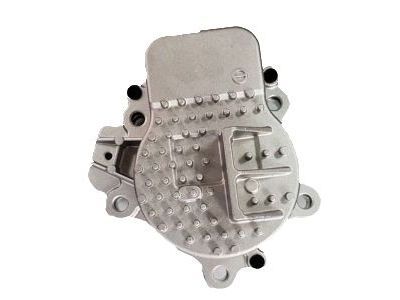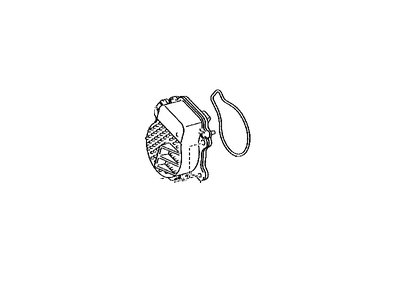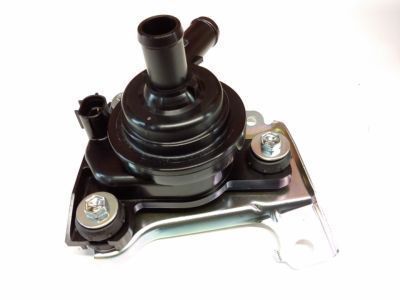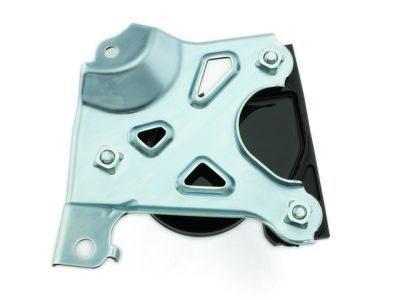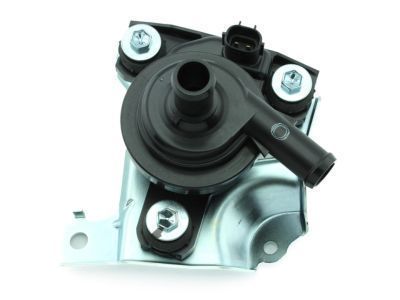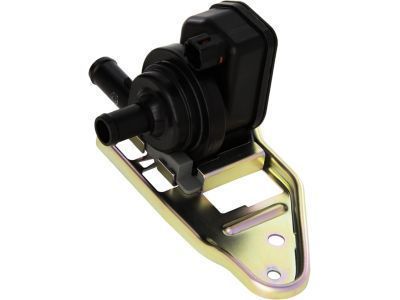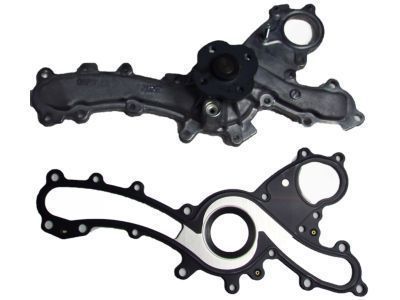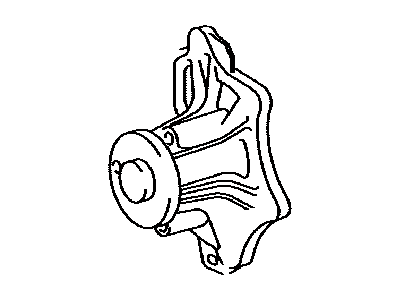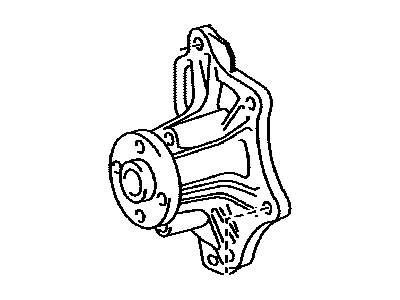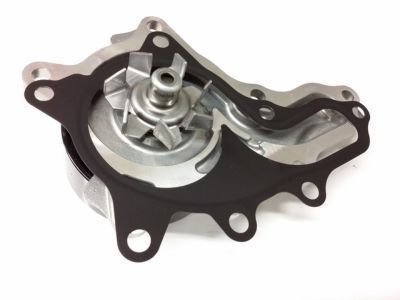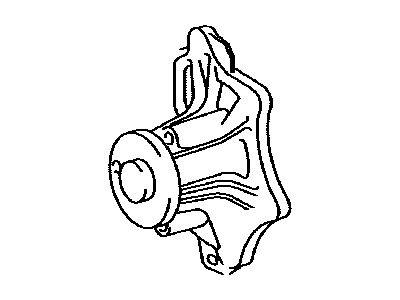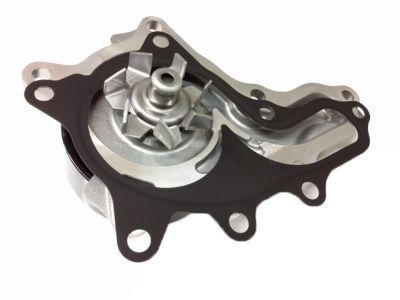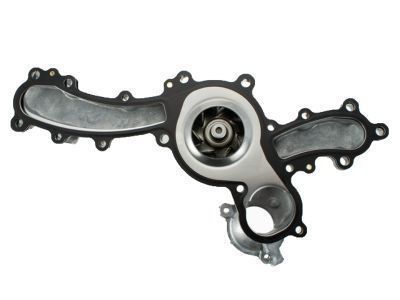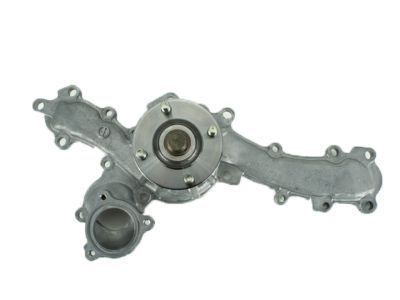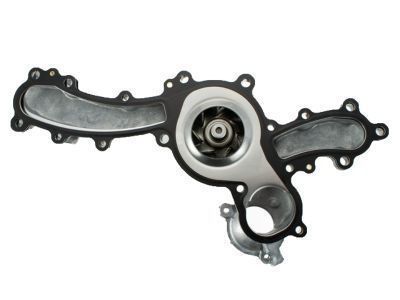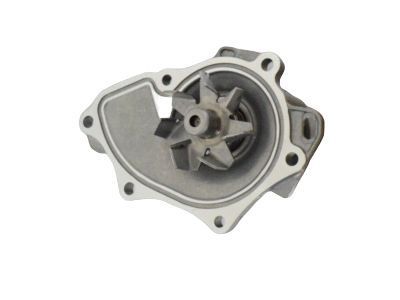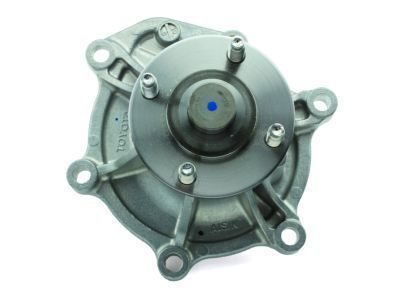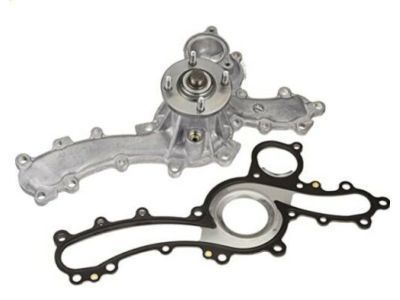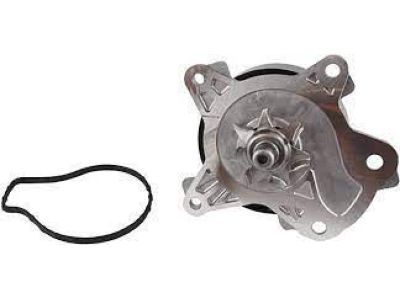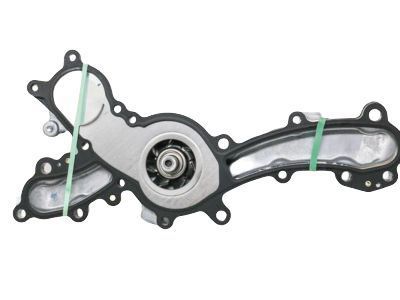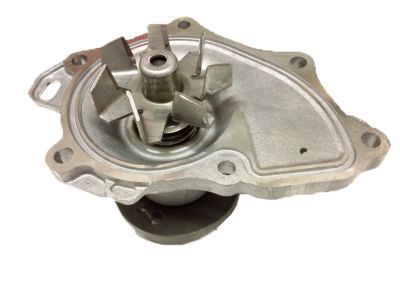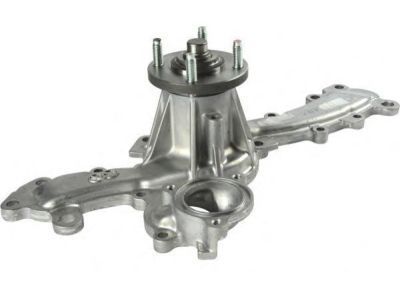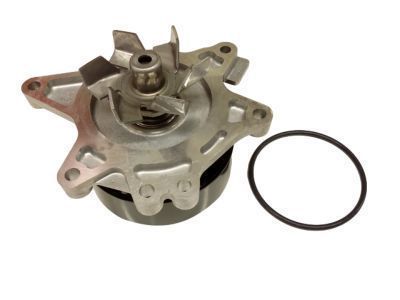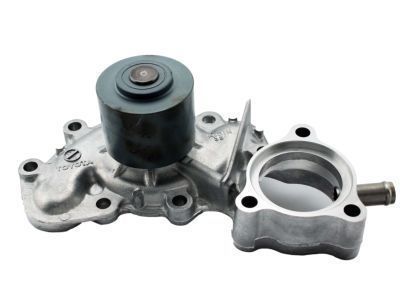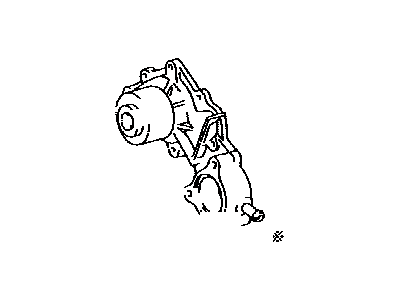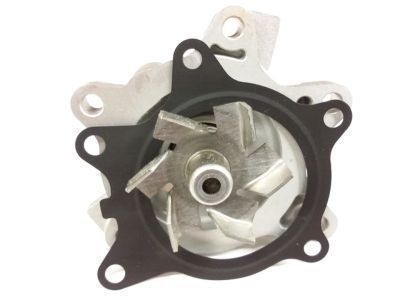

My Garage
My Account
Cart
Genuine Toyota Water Pump
H2O Pump- Select Vehicle by Model
- Select Vehicle by VIN
Select Vehicle by Model
orMake
Model
Year
Select Vehicle by VIN
For the most accurate results, select vehicle by your VIN (Vehicle Identification Number).
284 Water Pumps found
Toyota Engine Water Pump Assembly
Part Number: 161A0-29015$256.45 MSRP: $367.74You Save: $111.29 (31%)Product Specifications- Other Name: Pump Assembly, Electric ; Pump Assembly, Engine Water; Water Pump, Water Pump Assembly
- Replaces: 161A0-39015
Toyota Drive Motor Inverter Cooler Water Pump
Part Number: G9020-47031$162.23 MSRP: $230.63You Save: $68.40 (30%)Ships in 1-3 Business DaysProduct Specifications- Other Name: Water Pump Assembly with Motor & Bracket; Pump
- Replaces: G9020-47030
Toyota Engine Water Pump Assembly
Part Number: 16100-09442$143.08 MSRP: $203.41You Save: $60.33 (30%)Product Specifications- Other Name: Pump Assembly, Engine Water; Water Pump, Water Pump Assembly
- Manufacturer Note: (L)
- Replaces: 16100-39456, 16100-09440, 16100-09441, 16100-39455
Toyota Engine Water Pump Assembly
Part Number: 16100-29085$74.78 MSRP: $105.41You Save: $30.63 (30%)Ships in 1-3 Business DaysProduct Specifications- Other Name: Pump Assy, Engine Water; Water Pump, Water Pump Assembly
- Replaces: 16100-09070
Toyota Engine Water Pump Assembly
Part Number: 16100-09491$141.09 MSRP: $200.58You Save: $59.49 (30%)Ships in 1-3 Business DaysProduct Specifications- Other Name: Pump Assembly, Engine Water; Water Pump, Water Pump Assembly
- Replaces: 16100-39495, 16100-39496, 16100-09490
Toyota Engine Water Pump Assembly
Part Number: 16100-39515$90.97 MSRP: $128.23You Save: $37.26 (30%)Ships in 1-3 Business DaysProduct Specifications- Other Name: Pump Assembly, Engine Water
- Replaced by: 16100-39516
Toyota Engine Water Pump Assembly
Part Number: 16100-09201$138.05 MSRP: $196.26You Save: $58.21 (30%)Ships in 1-3 Business DaysProduct Specifications- Other Name: Pump Assembly, Engine Water; Water Pump, Water Pump Assembly
- Replaces: 16100-09200, 16100-59276, 16100-59275
Toyota Engine Water Pump Assembly
Part Number: 16100-09515$114.68 MSRP: $161.66You Save: $46.98 (30%)Ships in 1-3 Business DaysProduct Specifications- Other Name: Pump Assembly, Engine Water; Water Pump, Water Pump Assembly
Toyota Engine Water Pump Assembly
Part Number: 16100-09471$128.10 MSRP: $182.12You Save: $54.02 (30%)Product Specifications- Other Name: Pump Assembly, Engine Water; Water Pump, Water Pump Assembly
- Replaces: 16100-39405, 16100-39406, 16100-09470
Toyota Engine Water Pump Assembly
Part Number: 16100-59275$138.05 MSRP: $196.26You Save: $58.21 (30%)Ships in 1-3 Business DaysProduct Specifications- Other Name: Pump Assy, Engine Water
- Manufacturer Note: (J)
- Replaced by: 16100-09201
Toyota Engine Water Pump Assembly
Part Number: 16100-28041$109.14 MSRP: $153.85You Save: $44.71 (30%)Ships in 1-2 Business DaysProduct Specifications- Other Name: Pump Assy, Engine Water; Water Pump, Water Pump Assembly
- Replaces: 16100-28040
Toyota Engine Water Pump Assembly
Part Number: 16100-69325$159.58 MSRP: $226.86You Save: $67.28 (30%)Ships in 1-3 Business DaysProduct Specifications- Other Name: Pump Assy, Engine Water; Water Pump, Water Pump Assembly
Toyota Engine Water Pump Assembly
Part Number: 16100-39405$128.10 MSRP: $182.12You Save: $54.02 (30%)Product Specifications- Other Name: Pump Assy, Engine Water
- Replaced by: 16100-09471
Toyota Engine Water Pump Assembly
Part Number: 16100-39466$96.63 MSRP: $136.21You Save: $39.58 (30%)Ships in 1-3 Business DaysProduct Specifications- Other Name: Pump Assembly, Engine Water; Water Pump
- Manufacturer Note: (J)
Toyota Engine Water Pump Assembly
Part Number: 16100-09690$131.03 MSRP: $186.27You Save: $55.24 (30%)Ships in 1-3 Business DaysProduct Specifications- Other Name: Pump Assembly, Engine Water; Water Pump, Water Pump Assembly
Toyota Engine Water Pump Assembly
Part Number: 16100-0H010$94.27 MSRP: $132.88You Save: $38.61 (30%)Ships in 1-3 Business DaysProduct Specifications- Other Name: Pump Assy, Engine Water; Water Pump
Toyota Engine Water Pump Assembly
Part Number: 16100-39545$139.34 MSRP: $198.09You Save: $58.75 (30%)Ships in 1-3 Business DaysProduct Specifications- Other Name: Pump Assembly, Engine Water; Water Pump, Water Pump Assembly
Toyota Engine Water Pump Assembly
Part Number: 16100-09170$108.90 MSRP: $153.51You Save: $44.61 (30%)Ships in 1-3 Business DaysProduct Specifications- Other Name: Pump Assy, Engine Water; Water Pump
- Replaces: 16100-29175, 16100-09310, 16100-09080, 16100-09230, 16100-29415
Toyota Engine Water Pump Assembly
Part Number: 16100-69395$97.02 MSRP: $136.76You Save: $39.74 (30%)Ships in 1-3 Business DaysProduct Specifications- Other Name: Pump Assy, Engine Water
- Replaced by: 16100-69398-83
Toyota Engine Water Pump Assembly
Part Number: 16100-29156$53.97 MSRP: $75.43You Save: $21.46 (29%)Ships in 1-2 Business DaysProduct Specifications- Other Name: Pump Assy, Engine Water
- Replaced by: 16100-29157-83
| Page 1 of 15 |Next >
1-20 of 284 Results
About Toyota Water Pump
Your Toyota water pump holds the critical task of circulating the coolant from the engine to the radiator and back, to deter any potential engine overheating. It is made with a bladed impeller that moves the coolant through the pump and directly through the engine block to keep it at a cool temperature as well. As long as your water pump continues to pump the right amounts of coolant through without leaking, your engine temperatures should maintain at the proper levels. The pump will be located on one side of the engine block.
If you notice a puddle of coolant beneath your engine where your water pump is located, it is likely time to change out that pump! To change a water pump is a moderate job and will require some specialized tools and knowledge to safely complete water pump replacement. Be sure to buy a new Toyota water pump so you know that you are installing a part which was specially engineered for your vehicle. A water pump which has stopped pumping or that has cracked can result in coolant loss which could lead to an overheating engine or failure. It is recommended that most water pumps be replaced between every 60,000 and 100,000 miles.
You might suffer problem of aftermarket parts, or you might meet a situation that you cannot afford the part you are looking for. I am sorry that you went through some terrible shopping experience. However, the story changes at ToyotaPartsDeal.com. All parts we are going to deliver to you are guaranteed to be genuine OEM parts and they are brand new. All prices here are reasonable and affordable, and they are up to 33% off MSRP. Still hesitating? We have professional and competent part specialists helping you to buy a correct part if you do not know the part number.
If you notice a puddle of coolant beneath your engine where your water pump is located, it is likely time to change out that pump! To change a water pump is a moderate job and will require some specialized tools and knowledge to safely complete water pump replacement. Be sure to buy a new Toyota water pump so you know that you are installing a part which was specially engineered for your vehicle. A water pump which has stopped pumping or that has cracked can result in coolant loss which could lead to an overheating engine or failure. It is recommended that most water pumps be replaced between every 60,000 and 100,000 miles.
You might suffer problem of aftermarket parts, or you might meet a situation that you cannot afford the part you are looking for. I am sorry that you went through some terrible shopping experience. However, the story changes at ToyotaPartsDeal.com. All parts we are going to deliver to you are guaranteed to be genuine OEM parts and they are brand new. All prices here are reasonable and affordable, and they are up to 33% off MSRP. Still hesitating? We have professional and competent part specialists helping you to buy a correct part if you do not know the part number.
Toyota Water Pump Parts Questions & Experts Answers
- Q: What are the potential consequences of a failure in the water pump and how can one identify issues with it on Toyota Highlander?A:If the water pump is worn out, it can cause overheating of the engine and this may result to severe loss of the engine. The water pumps are equipped with weep or vent hole and if there is a failure with the pump seal, the coolant will seep out of this hole. Some models may require the use of a flashlight to identify the hole since the hole is located in the space behind the pulley just below the water pump shaft. Generally, a slight gray discolouration around the weep hole is normal, in contrast to dark brown stains that point at a defect. In case the water pump shaft bearings are worn out, one will hear a howling sound at the front of the engine when the engine is on, and the bearing wear can be tested by rocking of the water pump pulley vertically. It must be borne in mind not to interchangeability between drivebelt slippage, which gives a squealing noise, and water pump failure; use of automotive drivebelt dressing on the belts can rule out the belt as a source of noise.
- Q: What are the ways to check the operation of the water pump while it is installed on the engine on Toyota Supra?A:Water pump failure can cause overheating and serious damage to the engine. There are three ways to check the operation of the water pump while it is installed on the engine. If any one of the three following quick checks cast suspicion on the water pump, it should be replaced immediately. Start the engine and warm it up to normal operating temperature. Squeeze the upper radiator hose. If the water pump is working properly, you should feel a pressure surge as the hose is released. A seal protects the water pump impeller shaft bearing from contamination by engine coolant. If this seal fails, weep holes in the top and bottom of the water pump snout will leak coolant when the vehicle is parked. If the weep hole is leaking, shaft bearing failure will follow. Replace the water pump immediately. Besides contamination by coolant after a seal failure, the water pump impeller shaft bearing can also be prematurely worn out by an improperly tensioned drivebelt. When the bearing wears out, it emits a high pitched squealing sound. If such a noise is coming from the water pump during engine operation, the shaft bearing has failed. Replace the water pump immediately. To identify excessive bearing wear before the bearing actually fails, grasp the water pump pulley and try to force it up and down or from side to side. If the pulley can be moved either horizontally or vertically, the bearing is nearing the end of its service life. Replace the water pump.
- Q: How to remove the water pump on Toyota Tercel?A:To remove the water pump, start by disconnecting the battery cable and draining the cooling system. Remove the right-hand splash shield and HAC valve if applicable. Take off the accessory drive belt and intake manifold brace, removing the AS valve first on certain models. Disconnect the water by-pass on carbureted models and remove the oil pan dipstick. Remove hoses from the inlet pipe and detach the pipe from the water pump. Remove the alternator and adjusting bar, checking the by-pass pipe for leaks. Replace the O-ring or hose if necessary. Finally, remove the water pump by removing the bolt and two nuts, tapping it if stuck. For installation, clean the surfaces, install a new O-ring, and apply soapy water to the O-rings. Apply gasket sealant to the pump groove and install it with the bolt and nuts. Reinstall all parts and refill the cooling system, checking for leaks.
Related Toyota Parts
Browse by Model
4Runner Water Pump 86 Water Pump Avalon Water Pump C-HR Water Pump Camry Water Pump Celica Water Pump Corolla Cross Water Pump Corolla Water Pump Corolla iM Water Pump Corona Water Pump Cressida Water Pump Crown Water Pump Echo Water Pump FJ Cruiser Water Pump GR Corolla Water Pump GR Supra Water Pump GR86 Water Pump Grand Highlander Water Pump Highlander Water Pump Land Cruiser Water Pump MR2 Spyder Water Pump MR2 Water Pump Matrix Water Pump Mirai Water Pump Paseo Water Pump Pickup Water Pump Previa Water Pump Prius AWD-e Water Pump Prius C Water Pump Prius Prime Water Pump Prius V Water Pump Prius Water Pump RAV4 Prime Water Pump RAV4 Water Pump Sequoia Water Pump Sienna Water Pump Solara Water Pump Starlet Water Pump Supra Water Pump T100 Water Pump Tacoma Water Pump Tercel Water Pump Tundra Water Pump Van Water Pump Venza Water Pump Yaris Water Pump Yaris iA Water Pump bZ4X Water Pump
